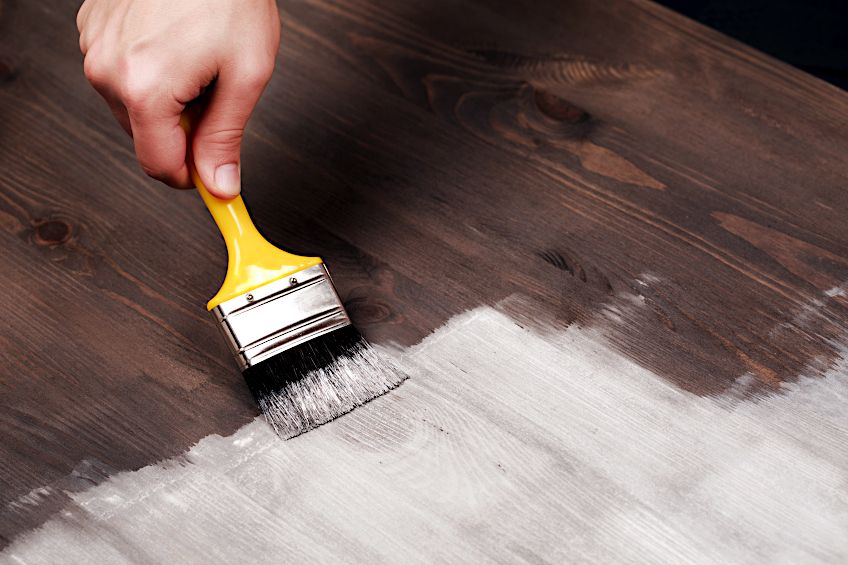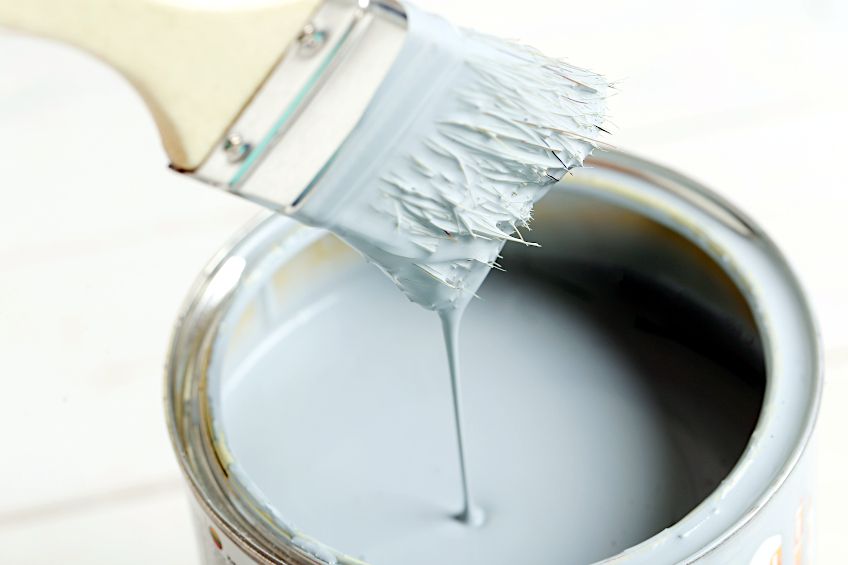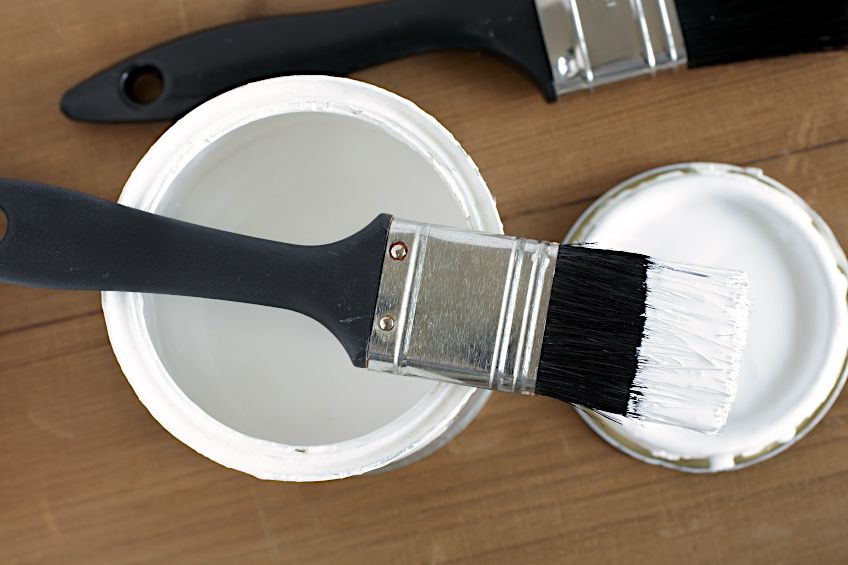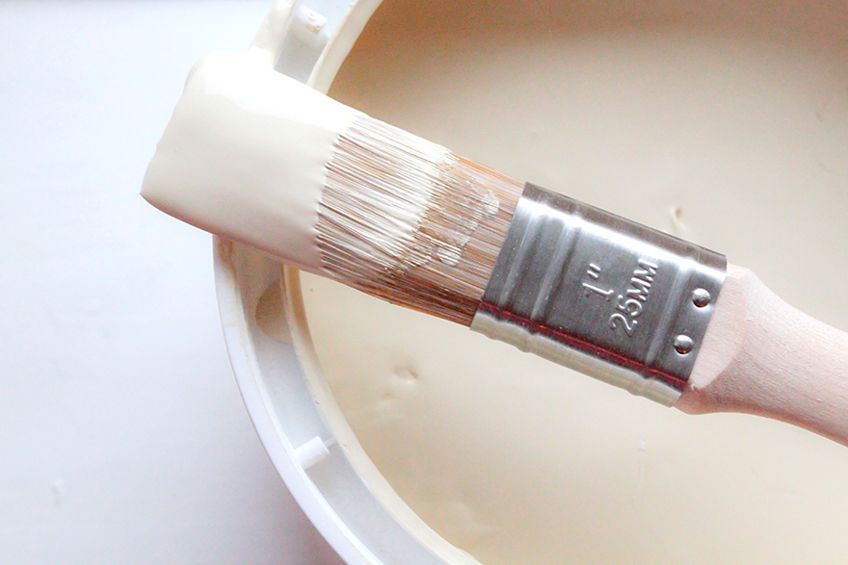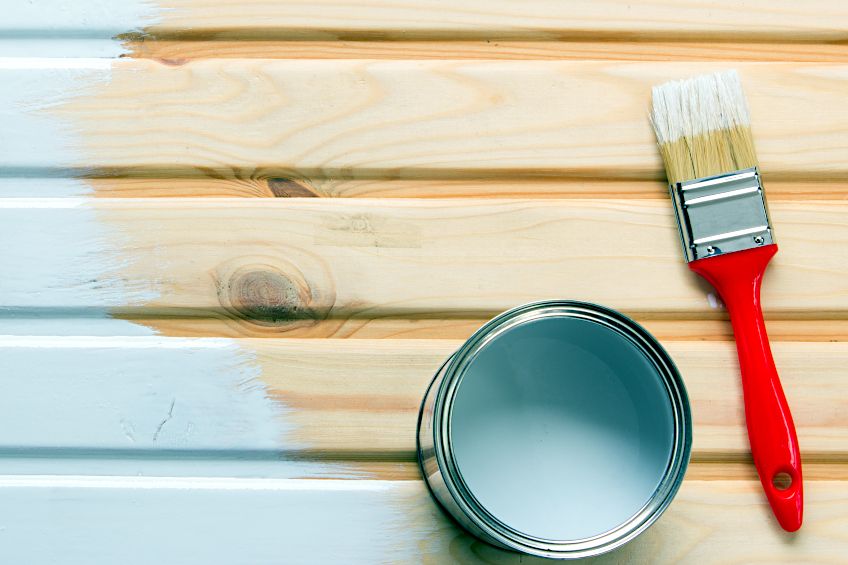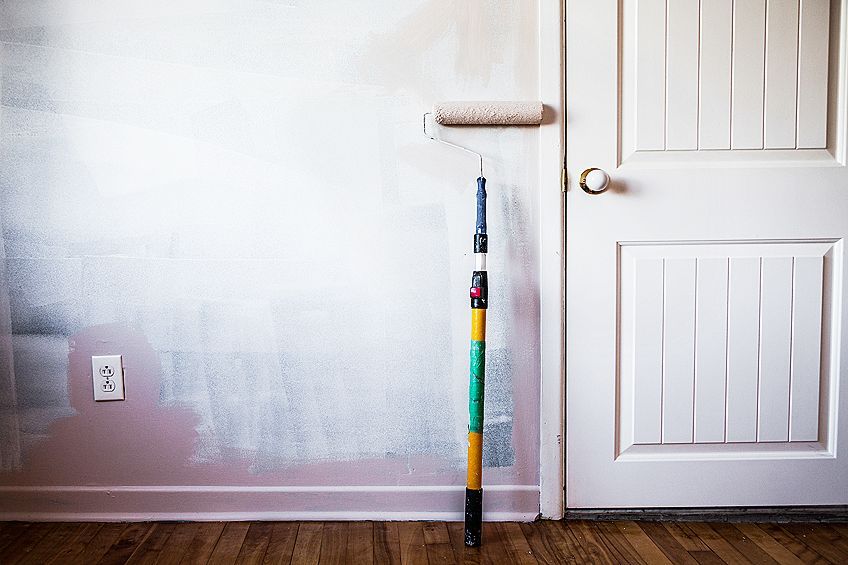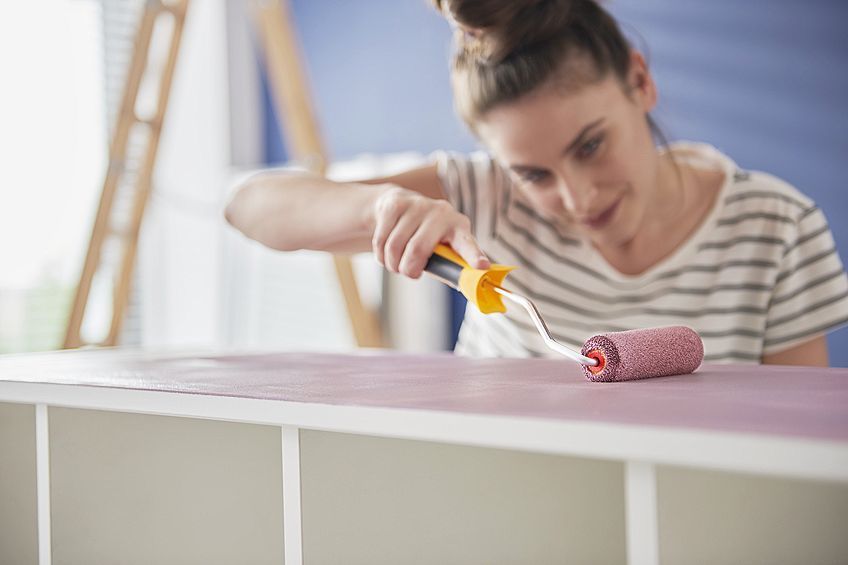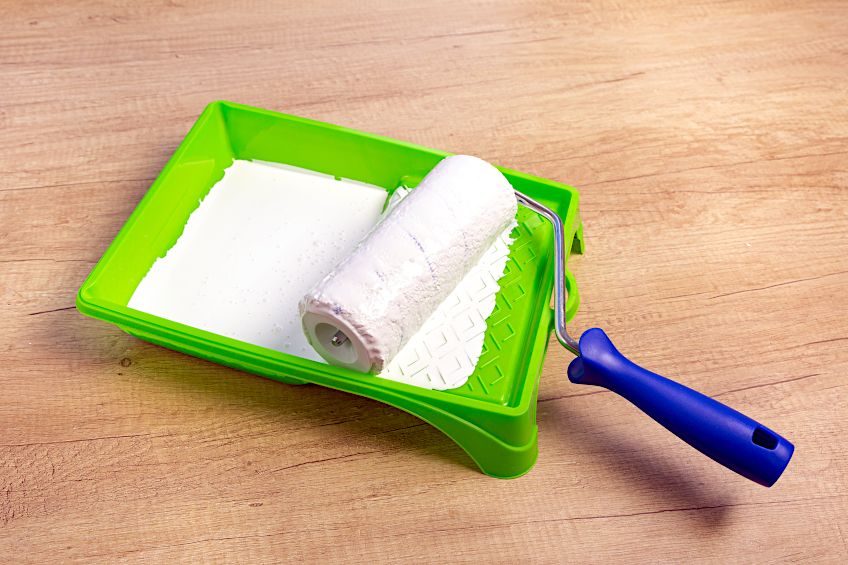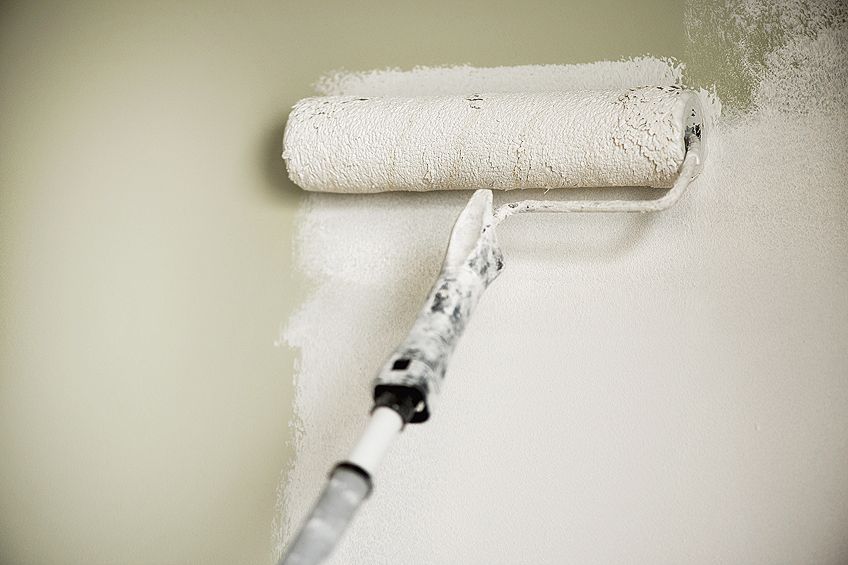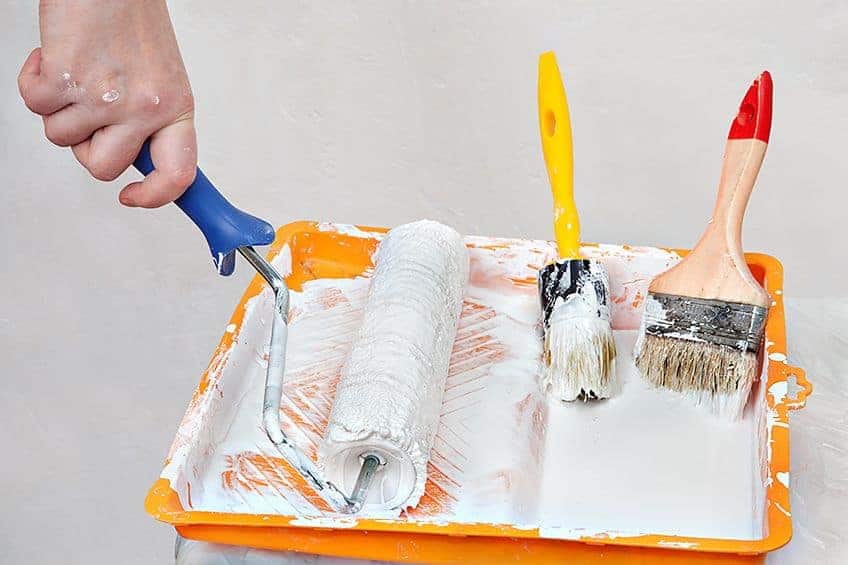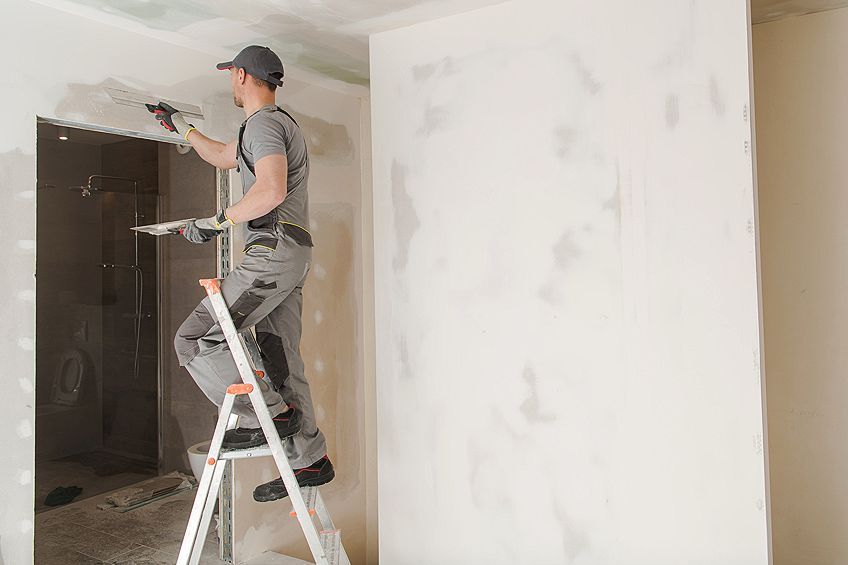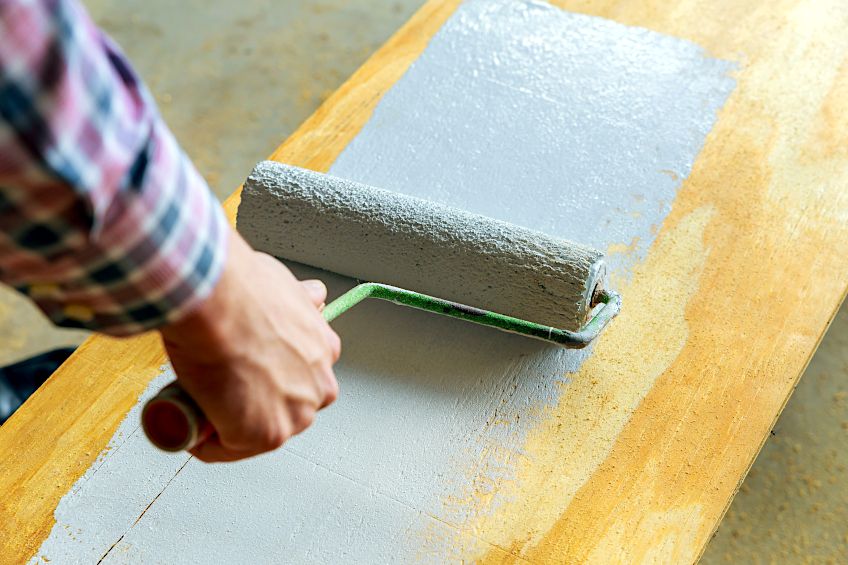How Long to Wait Between Priming and Painting?
This post may contain affiliate links. We may earn a small commission from purchases made through them, at no additional cost to you. You help to support resin-expert.com
Painting is an effective and relatively easy way to both protect and beautify a surface or workpiece. There are loads of paint out there to choose from, some of which offer unique and interesting finishes capable of breathing life into a space or bringing much-needed attention to a workpiece. One aspect of doing a good paint job that is often overlooked is primer, which not only ensures that your paint adheres to a surface well, but ensures that the color and tone of your paint are uniform throughout the application process. This being said, let’s have a look at how long to wait between priming and painting, what primer is, whether it’s always necessary, what happens if you paint without primer, and whether there are alternatives to conventional primer.
Table of Contents
How Long Should You Wait to Paint After Priming?
Wondering how long to let primer dry before paint is applied? Whether you’re a newbie painter or you’ve been painting for a long time, you may have asked yourself how long to wait between priming and painting. There are loads of primer types and brands out there to choose from, so it can be difficult to discern just how much time a primer needs to set and cure before the paint can be applied.
Primer is actually a lot like paint, as it contains some of the same fundamental stuff that makes paint, well, paint. Primer contains resins, solvents, and additives which allow it to interact with and eventually prime a given surface for later painting. There are actually different types of primer for different types of paint, each specially designed to ensure that each paint type adheres correctly and has a uniform tone and application. In most instances, manufacturers will state the drying time for each type of primer on their respective packaging.
This time can vary considerably depending on the type of primer being used and the conditions under which the primer has been applied. If the ambient temperature and/or humidity is too high or too low, the primer could fail to dry completely.
Different Types of Primers
There are three primary primer types for you to choose from. Different types of primers are used depending on the surface being painted and the type of paint being used to coat them. The three types of primers you’ll encounter are latex-based primers, shellac-based primers, and oil-based primers respectively.
Oil-Based Primers
Oil-based primers are some of the slowest drying primers out there, although to be fair, they are some of the oldest. Oil-based primers contain either natural or synthetic oil base that has been combined with solvents and resins to form a rudimentary primer. These primers can take over 40 minutes to dry to the touch, and over eight hours to cure completely.
This being said, they do provide some of the best finishes, even if they do contain loads of VOCs.
Latex-Based Primers
Latex-based primers are by far the most commonly used primer type due to their being some of the most readily available primers and the fact that they are some of the most versatile. Latex-based primers are among some of the fastest drying primers too, being dry to the touch in around 40 minutes and being ready to paint in around three hours depending on the brand and quality of the primer.
Shellac-Based Primers
Shellac primers are also widely used in both commercial and industrial applications. They contain a bit more VOCs (volatile organic compounds) than their latex-based counterparts, but these chemicals create a better surface for the paint to adhere to. Shellac primers also dry quicker due to the presence of solvents in their composition.
They will be dry to the touch in around 30 minutes and ready to paint in 40 minutes.
How Long Should You Wait to Paint After Priming?
If you want to know how long to let primer dry before paint is applied, you’re not alone. Painting too soon after the primer has been applied is the equivalent of trying to fry a steak that’s still frozen. It’s not going to turn out well and you’d have wasted loads of time, money, and effort for essentially no reason (it also might leave you hungry!). Primer is designed to ensure that your paint adheres correctly and that it has an even, high-quality finish once it dries.
Admittedly, it can be frustrating to wait for a primer to dry, especially if you’re itching to take your new paint for a test ride. This being said, if you don’t wait long enough for your primer to dry, you could end up with your paint job peeling away from the surface of your workpiece. Why? The primer sticks to your workpiece, and your paint sticks to your primer, making your paint nearly entirely dependent on how well your primer has adhered.
Another horror show that you could find yourself a part of if you don’t allow your primer to dry completely is an uneven paint job. If you’re painting porous surfaces like wood or drywall, primer acts as a base coat, ensuring that your paint isn’t absorbed into the fibers of the workpiece. In this instance, applying paint to wet primer can result in a patchy, uneven paint job.
Something that’s often overlooked when discussing dry time for primer is streaking. Applying paint to a primer that’s still wet (even a little bit) can result in some unsightly streaking. How? Well, you’re dragging (or spraying) paint on top of what is essentially colorless wet paint. This will inevitably result in streaking, which means you’ll have to remove the primer and paint and repeat the process. Knowing this, you might be asking yourself if it’s okay to wait a bit longer than necessary to apply your paint, just to be sure your primer is dry.
Truthfully, this isn’t advisable either as the paint will not adhere to a primer that has expired. This often results in a surface that looks chalk-like in appearance and will need to be sanded, cleaned, and re-primed.
Is It Possible to Leave Primer Unpainted for a Long Time?
Is it possible to leave primer unpainted for a long time? The drying time for primer solutions is often clearly stated on the packaging by manufacturers. As with virtually all product directions, they should be followed as closely as possible to avoid disappointment. Unfortunately, fortuitous events happen, and you could end up leaving your primed surface unpainted for longer than intended.
Does this mean that you can still apply your paint, though? Well, this depends on how long your surface has been left unpainted and the type of primer you’ve used. Some primers can be kept on a surface without painting for as long as a month, and others might only be able to hold on for a couple of hours before it begins to decay.
Primer isn’t designed to be surface coating and therefore tends to degrade pretty quickly when exposed to the elements. If primer is applied and left indoors, it tends to last longer due to a more stable temperature and the fact that nothing is buffeting the surface. Primers left outdoors, on the other hand, tend to degrade exceedingly quickly.
What happens to primer once it begins to break down? Well, when initially applied primer is much like paint, and aerosolized liquid. Once it’s had a chance to be applied to the surface it cures and dries into a “solid” coating. If left unpainted, this coating tends to change into a chalky, dusty substance that can easily be wiped off. Once a primer reaches this stage of degradation it will need to be removed and reapplied in order for the paint to adhere correctly.
Applying paint to a primer that has expired will result in the paint not only streaking but the finish of the paint will be ruined due to the chalky texture that primer has undertaken thanks to its expiration.
Is It Possible to Paint Without Primer?
Just because something can be done doesn’t mean that it’s a good idea. Painting without primer is possible, but the probability of you having a good-looking and long-lasting finish will be slim at best. Why does painting without primer have this effect on a workpiece? Well, primer has two primary functions; the first is to ensure that your paint adheres to the surface and the second is to ensure a uniform finish. What happens when you apply paint without primer then? Essentially, you’ll be left with a paint coat that begins to peel away over time. Not only that, but the overall look of your paint will likely be blotchy, especially if you’re painting surfaces like brick and wood. This is because these surfaces tend to soak up a lot of the paint, leaving only the desist sections of the surface decently coated.
Where does this leave you? Well, this means that the surface will have to be sanded, cleaned, re-primed, and re-painted. Not only does this take a considerable amount of time and effort to do but it can end up being a costly exercise. This being said, your safest bet is to always ensure that your surface has been cleaned and primed correctly before applying your first coat of paint. One surface that should always be primed is drywall. Why? Drywall tends to soak up a lot of paint, and as a result, failing to prime it can result in your finish being blotchy, uneven, and short-lived.
This will become evident if there is a harsh temperature change that causes the drywall and paint to expand and/or contract incrementally.
How Many Coats of Paint Should You Apply Once the Primer Has Been Applied?
How many coats of paint you use is almost always subjective. This depends on a number of factors, including the type of paint you’re using, the type of material you’ll be attempting to paint, the effectiveness of the primer, and the color of paint you’re using. Generally speaking, you should have two coats of paint on any workpiece, but this isn’t always the case. Why is two coats the rule of thumb you ask? Two (or more) coats of paint will increase the durability of the coating, even though it might cost a bit more. It also means that you’ll spend less time and effort maintaining said surface. However, if you’re painting a surface that isn’t super porous, absorbent, and won’t constantly be exposed to the elements, you might be able to get away with one coat. Additionally, using thick paints like enamel or oil-based paint will provide you with a decent first coat, which is more than enough for some applications.
Using White Paint Instead of Primer
Can you use white paint and primer interchangeably? Well, it depends on what you’re trying to get out of the primer you’ve chosen. If you’re using white paint to get better adherence for your paint it won’t work. Primer has specific properties that allow paint to adhere to surfaces better, and even though some white paints have some of these properties, they won’t do as good a job. Primers also cannot be used as a substitute for white paint, even if they do appear the same initially.
Pretty much for the same reason, you can’t use paint as a primer, you cannot use primer as a paint.
Primer lacks the durability and color that white paint does, which means it will inevitably peal away from your surface and/or be washed away by rain or moisture. On the other hand, flat white paint can be used as a base coat if you feel that your surface has adequate adhesion. Keep in mind that flat white paint is in no way a viable substitute for primer, but it will incrementally increase the adhesion of your final coat while doing a somewhat decent job of hiding any stains on the primary surface.
Is Self-Priming Paint Any Good?
If you don’t know what self-priming paint is, it’s basically a paint with a primer built into its formula (as the name suggests). This means that all you need to do is clean and/or sand your surface before applying your paint, which can save loads of time and potentially a little bit of money if you end up getting some for a good deal. Is the stuff any good, though? Well, yes and no. Self-priming paints are designed for applications where time is a huge factor, and the quality of the finish isn’t. These paints are formulated to stick well, but they lack a real tangible finish, with sheen being the one consistent exception. They tend to work best on surfaces with an existing stain, or ones that are completely bare.
They aren’t very versatile either, only working on specific materials. What would you use them for in that case? Well, self-priming paints are typically used in crafting applications where a project is time sensitive, and in instances where a workpiece or surface needs a color-matching touch-up. Keep in mind that the viscosity of self-priming paint is noticeably thicker than conventional paint, and should therefore be applied carefully.
Are There Alternatives to Using Off-the-Shelf Primer?
While it wouldn’t be very cost-effective to make your own primer from scratch, there are alternatives to using a dedicated primer solution. After all, you might find yourself in a pinch or a bit over budget one day, so it’s good to know what substances can be used as a viable alternative to off-the-shelf primer. One of the easiest ways to substitute primer is by using a latex solution. What does this mean? Essentially, it means using a water-based paint to prime your surface instead of a primer. This works pretty well all things considered, just ensure that the color of paint you’re using as the top coat is noticeably darker than the latex base to avoid bleed-through.
If you don’t have any latex paint nearby the other alternative is any paint with a satin finish or a flat finish.
The trick here is to apply a thin coat of either of these paint types to your bare and/or prepared surface before applying your topcoat. This should ensure that your finish dries as desired and that your paint adheres correctly. Other alternatives you should consider are drywall conditioning solutions. These work pretty well as a primer for most surfaces as they’re functionally the same as over-the-counter primer products. Regardless of which alternative primer coating you choose; we recommend ensuring that your surface is adequately prepared beforehand.
Is it Possible to Apply More Than One Coat in a Day?
This is a good question considering that most applications that require primer will have you applying more than one coat of paint too. Whether you can apply more than one coat of paint not only depends on the dry time for primer formulas, but it also depends on the type of paint you’re using to coat your surface. Different paint types tend to dry at different rates. This is essentially the same as the different dry times for primer solutions. One paint that dries particularly quickly is water-based or latex-based paints, which tend to dry pretty quickly, especially when exposed to direct sunlight and/or a closed environment with a constant stable temperature.
Water- or latex-based paints typically dry within four to five hours depending on the brand and quality of paint, at which point the surface can be lightly sanded and the second coat can be applied. Not all paints work this way though. Acrylic paints tend to take a bit longer to dry thanks to the nature of the formula and the thick consistency of the paint. Acrylic paints can take anywhere between 12 to 24 hours to cure and dry completely, at which point the second coat can be applied (sanding is optional, but advised for this paint type. Oil-based paints take the longest to dry of all the commonly used paint types. Oil-based paints can take upwards of 24 hours to cure and dry completely before a second coat can be applied.
Why should you wait for the paint to dry completely before your second coat is applied, you ask? Well, applying more paint to wet paint has the same effect as applying paint to wet primer.
It will create streaks and bunch up the initial coat, completely ruining the finish. It will also cause the texture of the paint to be inconsistent in some instances. Is it a good idea to apply a second coat of paint? Yes! Think of applying an additional coat of paint as a protective layer and finishing layer to our workpiece. Not only do second coats ensure that your finish is smooth and that the texture of the aesthetic is consistent, but they provided a (small) additional layer of protection to the surface of your workpiece.
How to Preserve Your Primer Between Coats
If you’re going to be applying multiple coats of primer, you might be asking yourself what the best way to preserve your primer between coats is. After all, primer tends to atrophy when exposed to the atmosphere, and you’ll likely have some sitting in a paint tray between coats (if you aren’t using an aerosolized product). One of the best ways to preserve your primer between coats that do not involve throwing it back into the container is to cover your painter’s tray with some aluminum foil. This will ensure a consistent temperature (more or less) and prevent contact with direct sunlight and dust particles. You can do the same with the painting tools if you haven’t decided to clean them between coats.
Should I Use Two Coats of Paint or Two Coats or Primer?
This is a tricky question to answer. Why? It depends on what the situation demands. The primary function of primer is to ensure that the paint has sufficient surface friction to allow the paint to adhere correctly. Its secondary function is to act as a solid base coat for the paint to come. Therefore, if both of these functions are fulfilled in one coat, there shouldn’t be a need for a second.
One instance where you might need to apply a second coat of primer is when the surface, you’re painting has a stain or blotch that bleeds through the primer. In this instance, you could choose to either apply another coat of primer or a second coat of paint. Either will ensure that the bleed-through issue is resolved.
Another example where an additional coat of primer might be required is when moving to a more muted color tone. For example. If you have a finish with a glossy, smooth texture, and you intend on applying a matt or eggshell finish, you can either double up the amount of primer you’re using or double up on your paint coats. Other examples include if you are painting areas that will be exposed to loads of moisture in their lifetime like a sauna or bathroom wall. Essentially, you’d use two coats of primer in any scenario where the primary surface needs to be concealed or where additional adhesion is needed for your paint.
Should You Sand After Your Primer Has Been Applied?
The only real function of sanding primer once it’s been applied is to achieve a smooth finish. There are resin particles in primer that appear as little grains once it has been applied to a surface. A light sanding with some fine-grit sandpaper will ensure that you have a smooth finish instead of little bumps beneath the surface of your paint. Is this necessary? No. If you’re applying paint with a textured finish or simply like the rough aesthetic of un-sanded primer, then there’s no real reason to sand a primed surface. This being said, if you are going to sand your primer a bit, be sure not to overdo it as this will erase the resin particles, rendering the primer ineffective.
Can You Water Down Paint and Use It as a Primer?
Put simply, no, you cannot use watered-down paint as a primer. Keep in mind that by watering down paint you’re already decreasing its adhesive properties. This in addition to the fact that it’s now more likely to seep into the surface rather than coating makes watered-down paint a decidedly bad choice as a primer alternative.
Is There a Difference Between Primer and Flat Paint?
Well, it’s pretty much the same difference between any paint and a dedicated primer. Flat white paint is sometimes seen as a decent alternative to a dedicated primer because it covers tonal differences on the surface you’re painting.
However, flat paint will not provide the same adhesive qualities that a dedicated primer will. Even self-priming paints don’t offer the same quality adhesion and finish that dedicated primers do, so if you’re looking for a high-quality finish, we recommend going about things the old-fashioned way, even if it is a bit more expensive and requires some more elbow grease.
Now that you know what primer is, how long to let the primer dry before paint is applied when to use more than one coat of primer, what self-priming paint is, what primer substitutes exist, and how to store your primer between coats, it’s time for you to get out there and put your new-found knowledge to the test. Remember to always ensure that your surface is adequately prepared before applying primer.
Frequently Asked Questions
How Long Should You Wait Between Priming and Painting a Surface?
Wondering how long to wait between priming and painting? Usually, manufacturers will state how long to let primer dry before paint is applied. However, most primers will dry completely within a 24-hour period if they’re not water-based.
Is the Time Between Applying Primer and Paint Important?
Is the time between primer and paint important? Yes! If the paint is applied before the primer has had a chance to dry completely, it will cause the paint to adhere incorrectly. It will also cause the paint to streak and create a fairly unsightly finish.
Are There Alternatives to Primer?
Are there alternatives to primer? Yes, there are. Latex paints and paints with satin or matt finishes do a decent job. However, these paints will not have the same adhesive attributes as a primer, which is something you should keep in mind.


